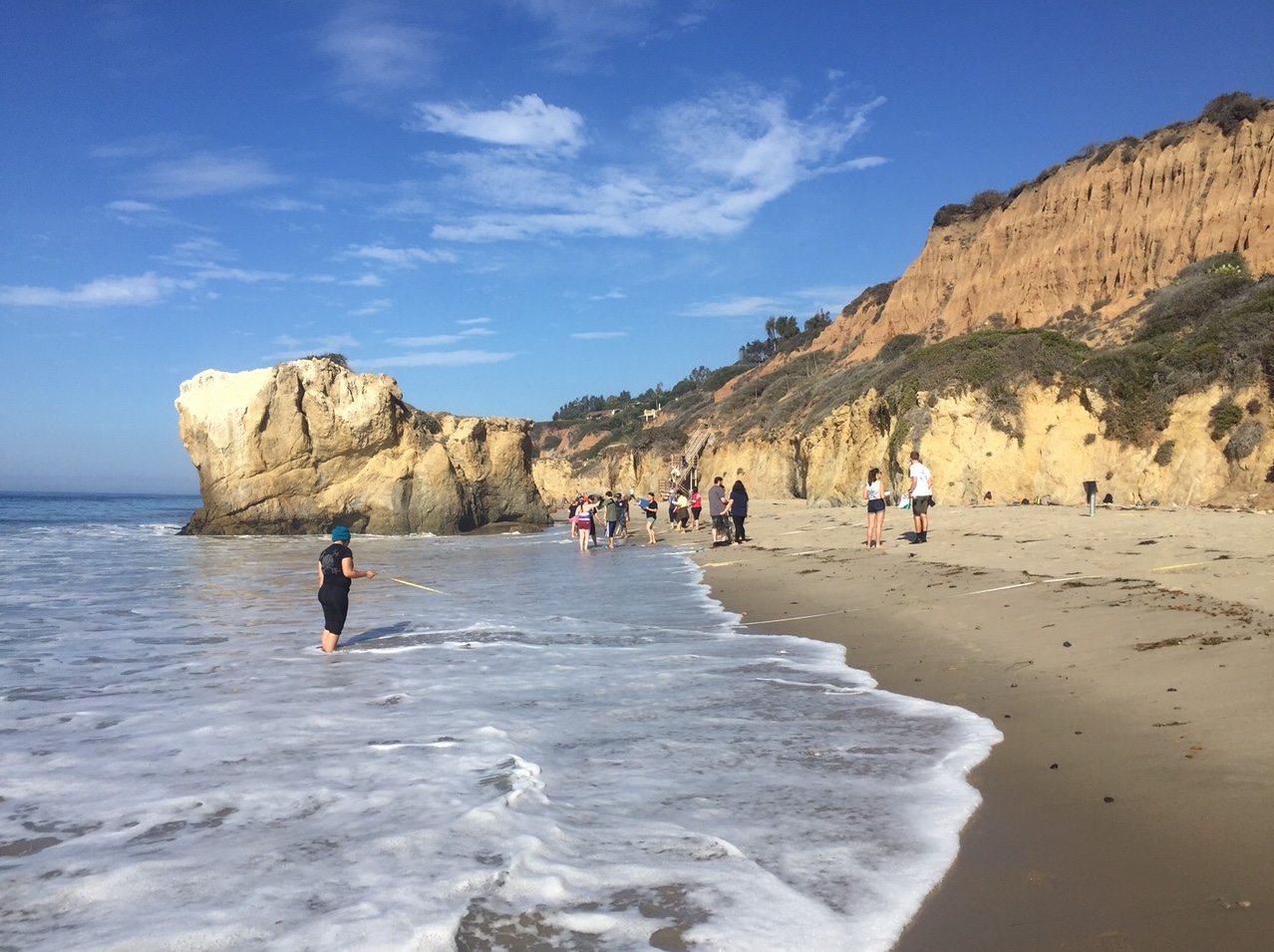CAMARILLO — CSU Channel Islands (CSUCI) Professor of Environmental Science & Resource Management (ESRM) Sean Anderson, Ph.D., is among four CSU faculty members to receive part of a research grant for $865,884 to help the state of California effectively manage its ever-changing coastline.
The California State University Council on Ocean Affairs, Science and Technology (COAST) has awarded $765,884 through its State Science Information Needs Program (SSINP) to four CSU faculty members and over 26 students at three different CSU campuses as well as collaborators at three institutions outside the CSU. All will be conducting research projects aimed at restoring, preserving, or minimizing nature and humankind’s impact on the state’s coasts, wetlands, and other aquatic resources.
The California Ocean Protection Council (OPC) awarded an additional $100,000 to CSUCI for a total of $865,884. Between the OPC grant and their $200,350 portion of the COAST grant, a total of $300,350 is earmarked for the CSUCI project.
Entitled “Improved Mitigation Frameworks,” the project will concentrate on aquatic areas that are of particular concern such as kelp and oyster beds, salt marshes, and sandy beaches.
The CSUCI two-year research project, which is just beginning, is aimed at identifying the best ways to compensate for damage to the California coast from climate change, development-driven habitat loss/fragmentation, or natural disasters like fires, mudslides or earthquakes.
“The philosophy we’ve built up over the last 40 years is to first and foremost, avoid injury to the coast,” Anderson said. “But sometimes, a road has to be expanded or there’s an oil spill or a natural disaster like a wildfire. Ideally, you restore the lost resource with something identical or very similar—an ‘in-kind’ mitigation. For example, you restore a wetland with another wetland. But sometimes that’s not possible, in which case we are left with an ‘out-of-kind’ mitigation.”
Researchers will investigate the best “out-of-kind” mitigation projects to replace damage to the coast. “Out-of-kind” mitigation or compensation is becoming much more common than “in-kind” mitigation across our dynamic California coast.
“If we’re on the east coast or we’re on the gulf coast, there are a gazillion wetlands because their coastline is flat, but California’s wetlands are like little pearl necklaces,” Anderson said. “We have a baby coastline, so our wetlands are small and scattered along a mostly steep, cliff-filled shoreline. If there is damage to Malibu Lagoon, for example, there aren’t nearby wetlands where we can compensate by restoring another wetland.”
If a kelp bed is destroyed, for example, by a power plant, it could endanger kelp bass, so an out-of-kind mitigation might involve creating a rocky reef or fish hatchery where young kelp bass could thrive, away from that power plant’s intake.
There are two kinds of damage that happen to the California coast: 1) acute damage such as a wildfire, oil spill or mudslide that happens every so often; or 2) chronic damage such as sea level rise owing to climate change, or human coastal development which happen continuously.
“Sea level rise is happening so fast,” Anderson said. “The beaches are disappearing more and more quickly, and with our degraded world, it’s getting harder and harder to find places where we can do this sort of restoration.”
Anderson and co-researcher UCLA Professor Emeritus of Environmental Earth Sciences Richard Ambrose, Ph.D., will assemble experts from some of the CSU and University of California (UC) campuses as well as teams of student researchers from UC and CSU campuses around the state.
All research teams will consult with state of California agencies such as the California Department of Fish and Wildlife. (CDFW) so that the results are as useful as possible to the state.
“The California Department of Fish and Wildlife (CDFW) is pleased that COAST has funded a suite of projects designed to fill critical data gaps and improve the state’s understanding of the role of artificial reefs in marine mitigation programs,” said CDFW Director Charlton H. Bonham. “We value and appreciate the ability to work with COAST to identify priority research needs and look forward to collaborating with the research projects as they proceed.”
CALIFORNIA STATE UNIVERSITY CHANNEL ISLANDS — California State University Channel Islands (CSUCI) is Ventura County’s only public university and opened in 2002 as the 23rd campus in the CSU system serving the regions of Ventura, Santa Barbara, and Los Angeles counties, as well as the entire state. CSUCI is located between Camarillo and the Oxnard Plain, midway between Santa Barbara and Los Angeles and 25 miles north from Malibu.
The campus is nestled against the foothills of the Santa Monica Mountains and is a 10-minute drive from the Pacific Ocean. With more than 5,600 students, 24,500 alumni, and 1,000 employees, CSUCI is poised to grow in size and distinction, while maintaining one of the most student-focused learning environments in public higher education with more than 90 academic degrees, teaching credentials, certificates, and professional and community programs.
Connect with and learn more by visiting www.csuci.edu or CSUCI’s Social Media.
The University encourages persons with disabilities to participate in its programs, events and activities. If you anticipate needing any type of accommodation, or have questions about the physical access provided, please contact the respective area below as soon as possible, but no later than seven (7) business days prior to the event/activity:
CSUCI Students
Disability Accommodations & Support Services: accommodations@csuci.edu
CSUCI Employees
Human Resources: angela.portillo@csuci.edu
Members of the Public
Title IX & Inclusion: titleix@csuci.edu

